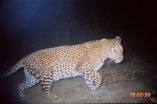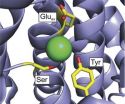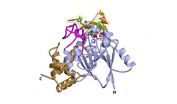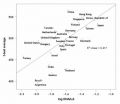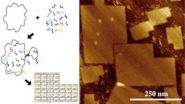(Press-News.org) Theories show how computing devices that operate according to quantum mechanics can solve problems that conventional (classical) computers, including super computers, can never solve. These theories have been experimentally tested for small-scale quantum systems, but the world is waiting for the first definitive demonstration of a quantum device that beats a classical computer.
Now, researchers from the Centre for Quantum Photonics (CQP) at the University of Bristol together with collaborators from the University of Queensland (UQ) and Imperial College London have increased the likelihood of such a demonstration in the near term by discovering a new way to run a quantum algorithm with much simpler methods than previously thought.
The first definitive defeat for a classical computer could be achieved with a quantum device that runs an algorithm known as Boson Sampling, recently developed by researchers at MIT.
Boson Sampling uses single photons of light and optical circuits to take samples from an exponentially large probability distribution, which has been proven to be extremely difficult for classical computers.
Unlike other quantum algorithms, Boson Sampling has the benefit of being practical for near-term implementations, with the only experimental drawback being the difficulty of generating the dozens of single photons required for the important quantum victory.
However, the Bristol-UQ-Imperial researchers have found that the Boson Sampling algorithm can still be proven to be hard for classical computers when using standard probabilistic methods to generate single photons.
Dr Anthony Laing who led the CQP elements of the research said: "We realised we could chain together many standard two-photon sources in such a way as to give a dramatic boost to the number of photons generated."
Dr Austin Lund from UQ and currently on sabbatical in CQP added: "Once we had the idea for the boosted source, we needed to prove that it could solve a version of the Boson Sampling algorithm. We hope that the last major experimental hurdle has now been overcome."
The research is published this week in Physical Review Letters.
INFORMATION:
Paper:
'Boson Sampling from a Gaussian State' by A.-P. Lund, A. Laing, S. Rahimi-Keshari, T. Rudolph, J.-L. O'Brien, and T.-C. Ralph in Phys. Rev. Lett. 113, 100502
Dr Anthony Laing is a research fellow at the Centre for Quantum Photonics in the University of Bristol's School of Physics. His interests include theory and experiments in quantum computation and simulations, and quantum communication.
Dr Austin Lund is a theoretical physicist at the University of Queensland with interests in quantum optics, quantum computation, and quantum information theory.
The quantum revolution is a step closer
2014-09-11
ELSE PRESS RELEASES FROM THIS DATE:
VALUE study reports on accreditation status
2014-09-11
SEPTEMBER 2014 | Ellicott City, MD – The Intersocietal Accreditation Commission (IAC) announced today that researchers from the University of Miami Miller School of Medicine have published a manuscript in Vascular Medicine analyzing a random national sample of Medicare beneficiary data to determine the outpatient vascular testing facilities' accreditation status and geographic location. The study manuscript entitled, "Accreditation Status and Geographic Location of Outpatient Vascular Testing Facilities Among Medicare Beneficiaries: The VALUE (Vascular Accreditation, Location ...
Bully victims more likely to suffer night terrors and nightmares by age 12
2014-09-11
Children who are bullied at ages 8-10 are more likely to suffer from sleep walking, night terrors or nightmares by the time they are 12 years old.
In a study published this week in Pediatrics, journal of the American Pediatric Association, Professor Dieter Wolke and Dr Suzet Tanya Lereya from the University of Warwick, found being bullied increases the risk for a category of sleep disorders known as parasomnias. These are sleep-related problems such as nightmares, night terrors or sleep walking.
A cohort of children from the Avon Longitudinal Study of Parents and Children ...
Study: Cat bites dog
2014-09-11
NEW YORK (September 11, 2014) – A new study led by the Wildlife Conservation Society reveals that in India's human dominated agricultural landscapes, where leopards prowl at night, it's not livestock that's primarily on the menu – it is man's best friend.
The study, which looked at scat samples for leopards in India's Ahmednagar's district in Maharashtra, found that 87 percent of their diet was made up of domestic animals. Domestic dog dominated as the most common prey item at 39 percent and domestic cats were second at 15 percent.
Seventeen percent of the leopard's ...
Is the pattern of brain folding a 'fingerprint' for schizophrenia?
2014-09-11
Philadelphia, PA, September 11, 2014 – Anyone who has seen pictures or models of the human brain is aware that the outside layer, or cortex, of the brain is folded in an intricate pattern of "hills", called gyri, and "valleys", called sulci.
It turns out that the patterns of cortical folding are largely consistent across healthy humans, broadly speaking. However, disturbances in cortical folding patterns suggest deeper disturbances in brain structure and function.
A new study published in the current issue of Biological Psychiatry suggests that schizophrenia is associated ...
How bacteria battle fluoride
2014-09-11
He's not a dentist, but Christopher Miller is focused on fluoride. Two studies from his Brandeis University lab provide new insights into the mechanisms that allow bacteria to resist fluoride toxicity, information that could eventually help inform new strategies for treating harmful bacterial diseases. The studies appear in The Journal of General Physiology (JGP).
Although most animal cells are protected from direct exposure to fluoride, this toxic element is a serious threat to single-celled organisms like bacteria and yeast. As a result, their plasma membranes carry ...
Structure of enzyme seen as target for ALS drugs
2014-09-11
VIDEO:
In this movie, the Dbr1 enzyme rotates 360 degrees. Partially inhibiting Dbr1 could represent a new way to treat most cases of amyotrophic lateral sclerosis (ALS), according to a new...
Click here for more information.
SAN ANTONIO, Texas, U.S.A. (Sept. 10, 2014) — Investigators from the School of Medicine at The University of Texas Health Science Center at San Antonio have determined the first high-resolution structure of an enzyme that, if partially inhibited, could represent ...
Hold the mayo
2014-09-11
You are what you eat, the saying goes, and now a study conducted by researchers at UC Santa Barbara and the University of Pittsburgh suggests that the oft-repeated adage applies not just to physical health but to brain power as well.
In a paper published in the early online edition of the journal Prostaglandins, Leukotrienes and Essential Fatty Acids, the researchers compared the fatty acid profiles of breast milk from women in over two dozen countries with how well children from those same countries performed on academic tests.
Their findings show that the amount of ...
Researchers create world's largest DNA origami
2014-09-11
Researchers from North Carolina State University, Duke University and the University of Copenhagen have created the world's largest DNA origami, which are nanoscale constructions with applications ranging from biomedical research to nanoelectronics.
"These origami can be customized for use in everything from studying cell behavior to creating templates for the nanofabrication of electronic components," says Dr. Thom LaBean, an associate professor of materials science and engineering at NC State and senior author of a paper describing the work.
DNA origami are self-assembling ...
New superfoods could help key protein keep bodies healthy
2014-09-11
A new generation of new superfoods that tackle heart disease and diabetes could be developed following research into a protein that helps keep cells in our bodies healthy.
Researchers at the University of Warwick found that the protein, called Nrf2, continually moves in and out of the nuclei of human cells to sense the cell's health and vitality.
When Nrf2 is exposed to threats to the cell's health it oscillates faster and activates an increase in the cell's defence mechanism, including raising the levels of antioxidant.
The researchers, from the University's Warwick ...
Childhood mentors have positive impact on career success
2014-09-11
New research from North Carolina State University finds that young people who have had mentors are more likely to find work early in their careers that gives them more responsibility and autonomy – ultimately putting them on a path to more financially and personally rewarding careers.
"We wanted to look at the long-term impacts on mentees in naturally occurring mentorship relationships, rather than participants in formal mentorship programs," says Dr. Steve McDonald, an associate professor of sociology at NC State and lead author of a paper on the work. "And we found ...
